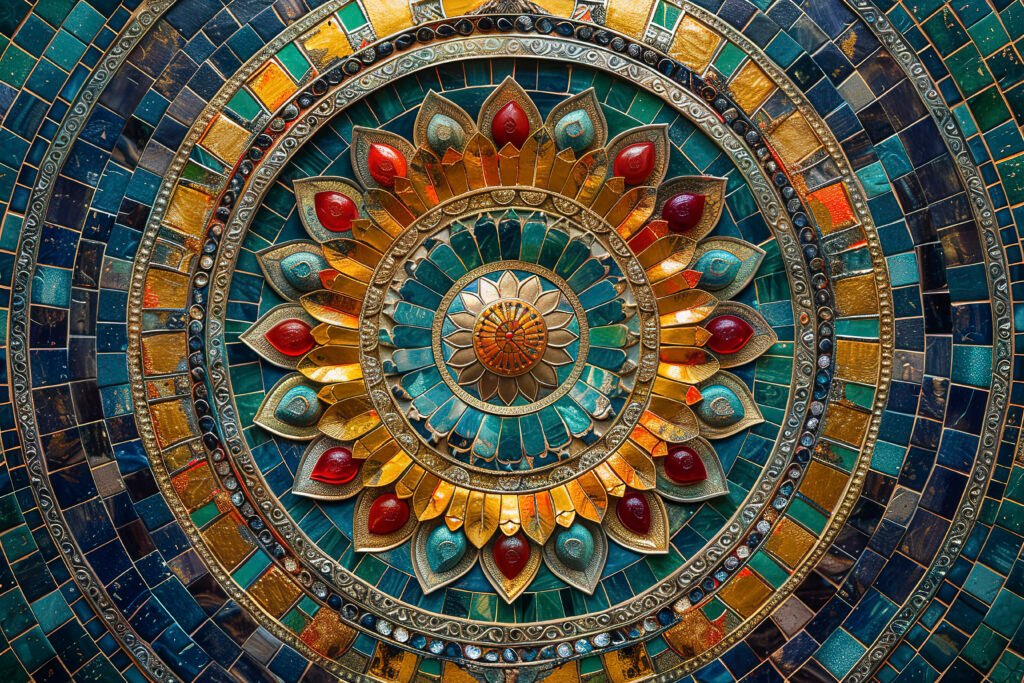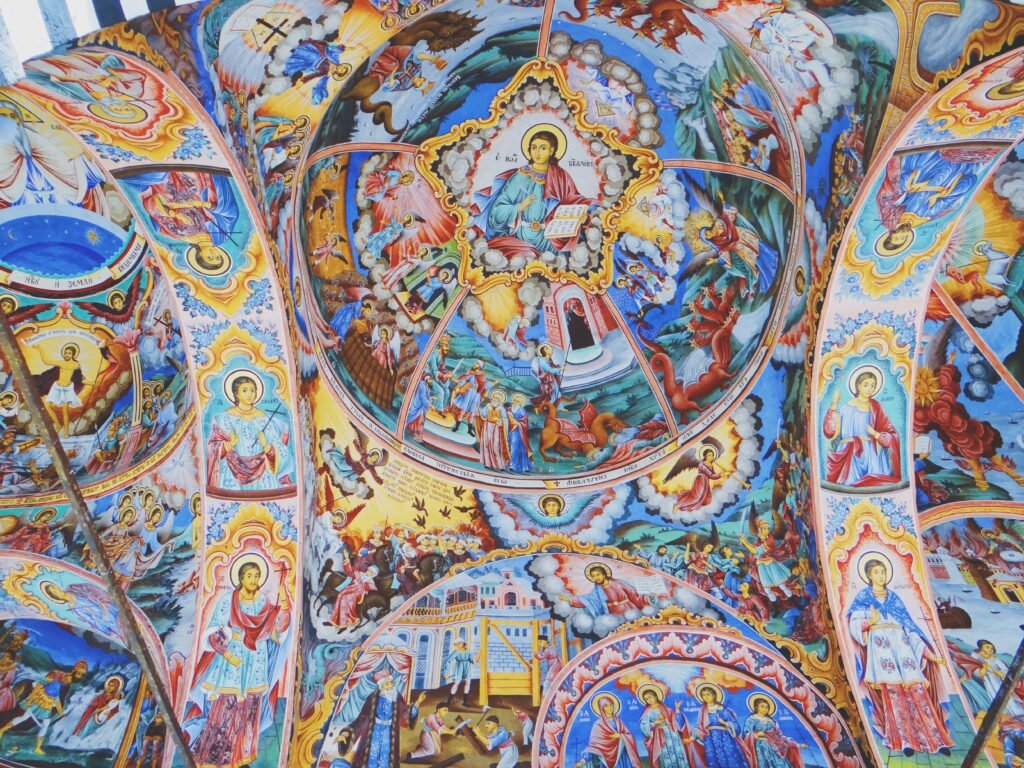Byzantine art stands as one of the most enduring cultural legacies of Late Antiquity, synthesizing Greco-Roman tradition and Eastern influences against the backdrop of the Byzantine Empire, which lasted for over a millennium. This art form goes beyond aesthetic expression, intertwining with the religion, politics, and philosophy of its time, especially Eastern Orthodox Christianity.
Characterized by an aesthetic that emphasizes spirituality, Byzantine art manifests majestically in mosaics, icons, frescoes, and architecture. Even after the fall of Constantinople in 1453, its influence has persisted within religious and artistic traditions of the Orthodox world, inspiring numerous contemporary artists around the globe.
Byzantine Art: From Spiritual Function to Refined Technique
Byzantine art developed a visual language aimed at communicating divine transcendence through symbolism and stylized forms. Unlike classical art, which prized naturalism, Byzantine artists portrayed elongated figures, serene expressions, and intense use of gold to represent the divine.
Byzantine mosaics represent the technical apex of this expression, employing small pieces of glass, stone, ceramic, and gold tesserae which, under light, create luminous and almost mystical images. These mosaics adorn churches such as the magnificent Hagia Sophia in Istanbul and the Church of San Vitale in Ravenna, Italy — true testimonies of Byzantine spirituality rendered in stone and color.
According to Steven Runciman in Byzantine Art and Civilization (2004), mosaics were not merely decorative but served as a means to make visible the divine presence, creating a sacred atmosphere where worshipers could experience transcendence. Besides mosaics, religious icons — painted images on wooden panels — played a central role in devotional practices, considered windows to the spiritual world and still venerated in Orthodox churches today.
Influence and Relevance of Byzantine Art Today
Despite the fall of the Byzantine Empire, its artistic legacy survived and spread through diverse cultures and artistic expressions. Orthodox churches worldwide continue to preserve and produce art according to Byzantine canons, keeping this millenary tradition alive.

Renowned museums such as the Metropolitan Museum of Art, the British Museum, and the Byzantine Museum of Athens house exceptional Byzantine art collections, attracting scholars, tourists, and sacred art enthusiasts. These institutions curate exhibitions that emphasize not only technique but also the historical and religious significance of Byzantine art.
In contemporary art, interest in Byzantine art manifests creatively. Artists like Kehinde Wiley incorporate visual elements such as golden backgrounds and halos into their works, creating dialogues between tradition and modernity. Furthermore, digital design and urban art draw inspiration from Byzantine geometry, symmetry, and symbolism to produce pieces that resonate with today’s world.
The symbolic and timeless character of Byzantine art offers, in modern times, a moment of reflection, connecting viewers to a profound spiritual and historical dimension. This combination of technique, beauty, and meaning ensures that Byzantine art remains not only relevant but essential to understanding Western and Eastern art and culture.
An Invitation to Contemplation and Cultural Rediscovery
Exploring Byzantine art invites us to immerse ourselves in an experience that transcends the visual — an encounter with the sacred, tradition, and the cultural complexity of an empire that shaped much of the Christian world. Its mosaics and icons are not merely museum objects but bridges connecting past and present.
For those seeking inspiration, understanding Byzantine art means recognizing how art can serve as a vehicle for faith, power, and cultural identity. In a world increasingly dominated by speed and digital media, the luminous silence of Byzantine mosaics and the reverence for icons invite us to slow down and contemplate the mystery of existence.
If you wish to embark on this journey, visit museums like the Metropolitan Museum of Art in New York, where the Byzantine collection is carefully preserved, or travel to Istanbul to witness the grandeur of Hagia Sophia. The legacy of Byzantine art lives on, and its aesthetic and spiritual richness awaits to transform your perception of art and history.



